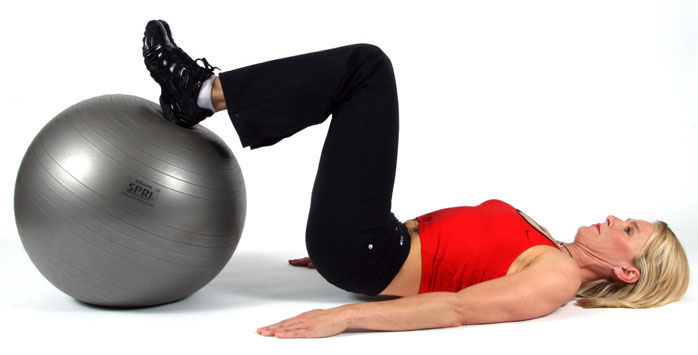You want to be more flexible, but even though you stretch, stretch and stretch some more, it seems that your muscles remain tight. To achieve and maintain flexibility to move easier and with less risk of injury, you’ll need to reset the body with specific strengthening and stretching movements and techniques.
Can You Touch Your Toes?
It may seem like an easy task, but one of the first measures of flexibility is ease of movement in touching your toes. The “Sit and Reach” test measures the general flexibility of your lower back and hamstring muscles. Because tightness in the low back and hamstrings is often related to muscle pain and stiffness, this test may help determine a person's risk for future pain and injury. But once you’ve found out your results, how can you improve your flexibility?
Start Here
When you realize that you lack flexibility, understanding why your body is limiting movement is important. The body is framed by your skeleton and connected by the muscles. When it senses that a muscle isn’t strong enough to hold the skeleton together, it will restrict movement and put tension on the muscles, which makes the muscles feel tight. Therefore, to achieve greater flexibility, you need to strengthen muscles and then stretch the connective tissues (your tendons, ligaments and muscle fascia).
Sometimes we feel a greater range of motion when we repeat movements. This type of gain is due to the muscle generating heat and allowing a natural stretch of fibers, but these gains are limited to the muscle tension set by the strength of the muscles.
Strengthen
For the lower back, two effective and simple strengthening movements to instantly increase flexibility are the bridge and hamstring curl with a ball. Both of these movements will strengthen those muscles and, ultimately, allow greater flexibility.
The Bridge

Start lying on the ground with your hands at your sides and knees bent. Slowly tip the pelvis toward your belly and curl the backside off the floor. Hold at the top of this movement for eight to 10 seconds before releasing and lowering back to the floor. Complete 12 to 15 repetitions.
Hamstring Curl With a Ball or Towel

Start lying on the ground with your hands at your sides, knees bent and feet resting on the ball. Slowly tip the pelvis toward your belly and curl the backside off the floor while keeping your feet balanced on top of the ball. Slowly extend the legs to parallel and then return to the bent-knee position. Continue this movement for 12 to 15 repetitions. If you do not have a stability ball, place your feet on paper plates for a carpeted surface or a towel for a tile/wood floor surface to perform the movement.
You should feel your hamstring and glutes working throughout this movement. Although these are basic, beginner exercises, performing them on a daily basis will help increase your flexibility in as little as two weeks. Maintaining this strength will result in greater range of motion.
In addition to the strengthening moves, you will still need to stretch. Dynamic stretches like leg swings forward and back or side to side will help lengthen these muscles. Static stretches, such as seated straight leg reaches (like the movement in the sit and reach test) as well as single-leg hamstring stretches lying on your back and bringing the leg towards the ceiling, can be performed at the end of your workouts.
Other areas of the body that are most likely to need flexibility training are the chest, triceps and calves.
Chest
Opposing muscles of the chest are the lats, upper back and erector spinae. Exercises that both strengthen these muscles and decrease chest tightness include lat rows, lat pull-downs, supermans and rear flys. All of these movement patterns could be done dynamically to stretch the chest area.
Triceps
Although you may not feel tightness in the back of the arm, you might feel pain in your elbow, which indicates a loss of flexibility in the elbow joint. Effective strengthening moves include straight-arm pull-downs, bent-arm pull-downs and overhead triceps extensions with rotation at the end of the movement.
Calves
Many women experience foot pain due to tight calves caused by wearing high heels for extended periods. Simple strengthening exercises include toe pulls or heel walks with toes raised; lowering the heels from a platform is an effective stretch for these same muscles.
 by
by 







 by
by